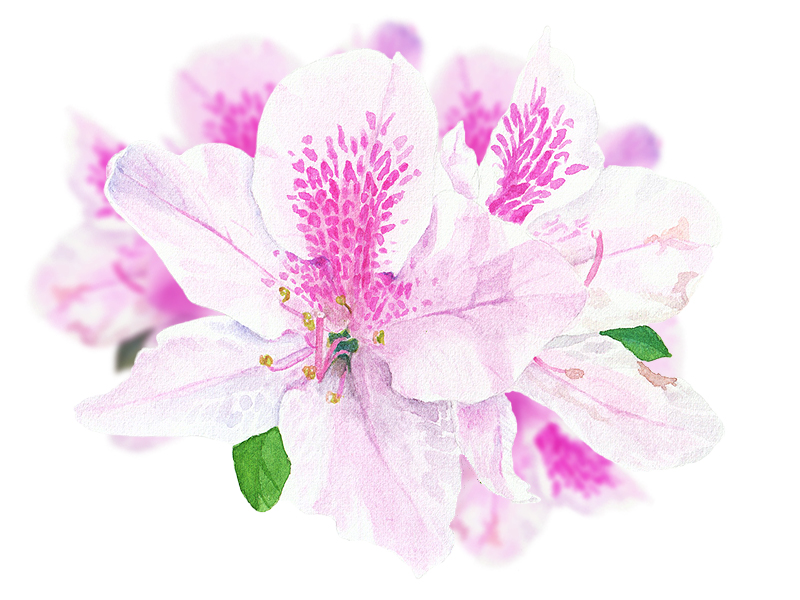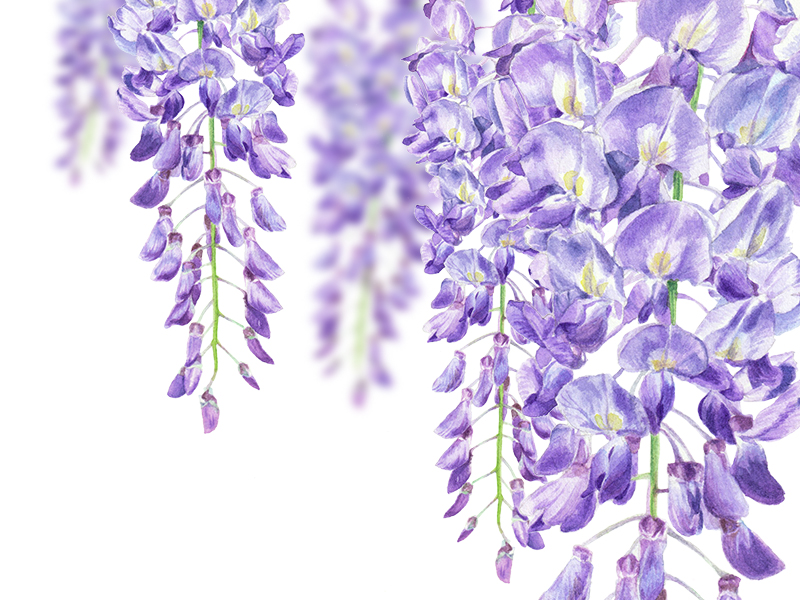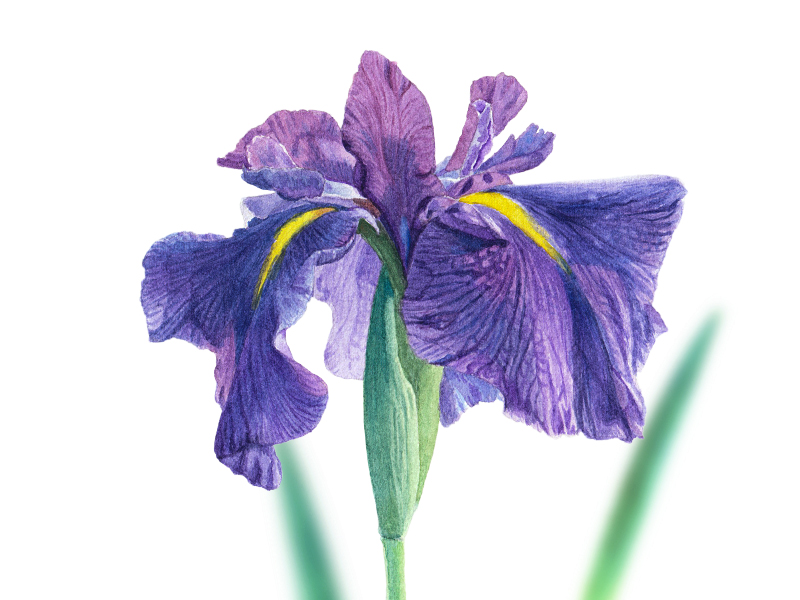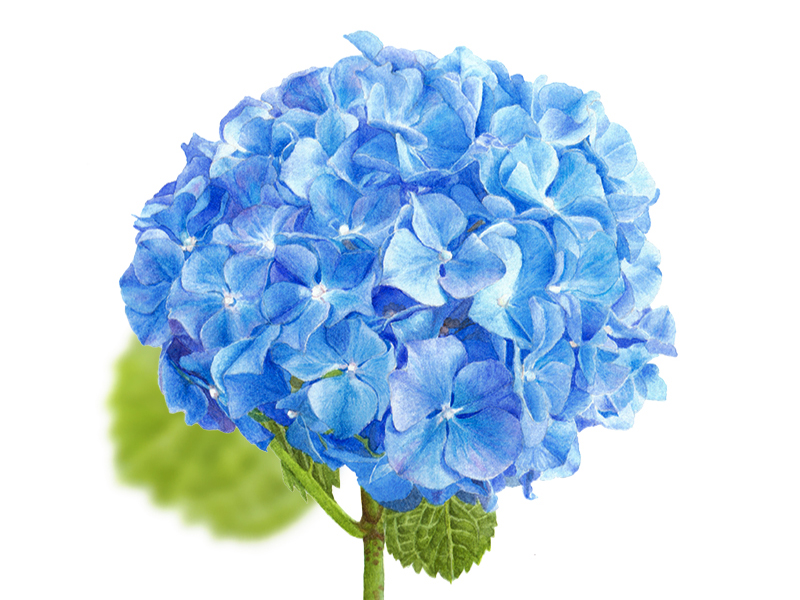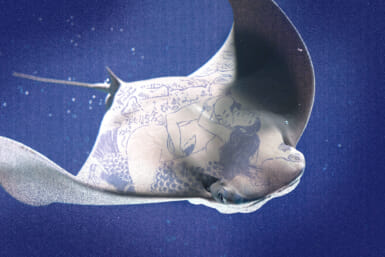Flowers hold great significance in Japanese life, art and culture, from ikebana arrangements carefully placed during a tea ceremony to floral prints on kimono to poetic haiku odes. Japanese ukiyo-e prints inspired Claude Monet’s water lily series and Vincent Van Gogh’s iris paintings.
Besides the highly admired cherry blossoms, chrysanthemums, the official Imperial seal, is another symbol of Japan and you will find it on passports and the 50 yen coin. Paulownia is the Government seal of Japan.
Even though cherry blossom season gently blowing away, there is still an abundance of colorful and graceful flowers to be enjoyed in the coming months.
Azalea • genus Rhododendron
The cool thing about this plant is that you don’t have to travel to a special park or garden to view them. It is a strong shrub, so you will see some on the roadside and perhaps enjoy them on your bike ride to work or view them outside your train window. With that said however, seeing them on the grounds of a proper garden is a delightful experience. From afar, you’ll see them in lush spherical formation where many shades of white, pink, red and purple can be enjoyed. If you are in the city, the Nezu Shrine, with 3,000 azalea plants, holds the annual Bunkyo Azalea Festival (through April). If you want to see “azaleas on steroids,” Shirofune Kannonji Temple in Ome is the place to go with 20,000 azalea bushes.
When: April to May or mid-June (depending on weather)
Where: Nezu Shrine, Rikugien, Shiofune Kannonji Temple, Hakone
Interesting Fact: They are highly toxic and honey made from the pollen is commonly referred to as mad honey.
Japanese Wisteria • Wisteria floribunda • genus Wisteria
These mysterious vine-like flowers cascade down so whimsically with their fragrant so sweet ranging in colors of purple, pink, white and yellow. Usually seen on trellises and tunnels at specials parks, these romantic blooms will take your breath away. At Ashikaga Flower Park, home to 300 wisteria trees, you’ll be able to enjoy the night illumination, which gives another spectacular perspective and a more dramatic experience. Although located in Tochigi prefecture, it is a must-see sensory-overload experience in Kanto. If you want a quick hop on the local train, the Fuji Festival (through May 5) at Kameido Tenjin Shrine is worth a visit. With wisterias planted in the Edo period, they are subject to many ukiyo-e prints by masters such as Hokusai and Hiroshige. With a signature red bridge and views of Tokyo Skytree, it makes an interesting contrast to historical and contemporary Japan. Besides ukiyo-e, wisteria floribunda are often seen in kimono patterns and kanzashi (hair accessory, often seen on maiko) and are a subject of poetry e.g Manyoshu “Collection of Ten Thousand Leaves.” It is also a monogram of the once powerful Fujiwara clan.
When: mid April to mid May
Where: Ashikaga Flower Park, Kameido Tenjin Shrine, Yokosuka Botanical Garden
Interesting fact: Until the Edo Era commoners were forbidden to wear the color purple.
Iris ensata • Iris laevigata • Iris sanguinea • genus Iris
When you think of iris, some may think of Van Gogh’s painting, “Irises,” which was influenced by the ukiyo-e woodblock prints. In Japan, Ogata Korin’s folding screen painting of “Irises” is a national treasure, and is on collection at the Nezu Museum. Irises are commonly used in ikebana– the buds along with their leaves can make an elegant arrangement by itself. There are three types of Japanese irises – Hanashobu, Kakitsubata and Ayame – and each blooms at a different time between May and June.
When: early May to late June (depending on the species)
Spots: Koishikawa Korakuen, Mizumoto Park, Meigetsuin in Kamakura, Kiyosumi Garden, Meiji Jingu Inner Garden, Imperial Palace East Garden
Interesting fact: Iris is known for its purifying elements and as such on May 5 Japanese parents prepare a bath with iris leaves to promote good health for children.
Hydrangea • genus Hydrangea
When I think of June, I think of rainy season and it’s symbolic flower the hydrangea, with a cliché character of a snail. The acidity level of soil and rain affects the colors of the flowers allowing gardeners to manipulate the bright blue, purple, pink and white hues. Like azaleas, you will see hydrangeas planted here and there, but the best and quick local escape to visit is Kamakura. There is an abundance of charming hydrangeas planted in many of the historical temples: Meigetsuin even has the nickname “Ajisaidera.” If you want to see marvelous coastal views in the background, Jojuin and Hasedera temples are recommended. Nicknamed the “Hydrangea Train,” the Hakone Tozan Railway Line has hydrangeas lined right next to the railways.
When: June (rainy season) to early July
Where: Bunkyo Ajisai Festival at Hakusan Jinja, Ueno Onshi Park, Showa Memorial Park, Sumida Park, Hakone Tozan Railway
Interesting fact: Ama-cha is a sweet herbal tea made from Hydrangea leaves used during the Buddha bathing ceremony on April 8 – the day believed to be Buddha’s birthday in Japan.
Illustrations by Anna Ishizuka. See more work on Instagram at @artzy.anna

